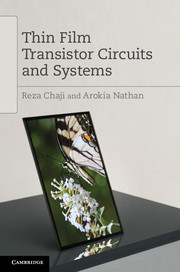Book contents
- Frontmatter
- Contents
- Preface
- 1 Introduction
- 2 Design considerations
- 3 Hybrid voltage–current programming
- 4 Enhanced-settling current programming
- 5 Charge-based driving scheme
- 6 High-resolution architectures
- 7 Summary and outlook
- Appendix A Enhanced voltage driving schemes
- Appendix B OLED electrical calibration
- References
- Index
Appendix B - OLED electrical calibration
Published online by Cambridge University Press: 05 September 2013
- Frontmatter
- Contents
- Preface
- 1 Introduction
- 2 Design considerations
- 3 Hybrid voltage–current programming
- 4 Enhanced-settling current programming
- 5 Charge-based driving scheme
- 6 High-resolution architectures
- 7 Summary and outlook
- Appendix A Enhanced voltage driving schemes
- Appendix B OLED electrical calibration
- References
- Index
Summary
This appendix presents a stable compensation scheme for AMOLED displays based on the strong interdependence observed between the luminance degradation of OLED and its current drop under bias stress [114]. This feedback based compensation provides 30% improvement in the luminance stability under 1600-hour of accelerative stress. To employ this scheme in AMOLED displays, a new pixel circuit is presented that provides on-pixel electrical access to the OLED current without compromising the aperture ratio.
Interdependence between electrical and luminance degradation
Figure B.1 shows the lifetime results of a 4-mm2 PIN-OLED with a red phosphorescent emitter for a constant luminance of 1500 nits/cm2. A constant voltage of 3 V is applied to the OLED and the current and luminance are measured every 10 minutes. As seen, the ratio between luminance and current degradation is almost constant for the entire range. Here, ΔL and ΔI are the degradation in the OLED luminance and current, respectively, and L0 and I0 are the respective initial values. From the observed interdependence, it appears very likely that both luminance degradation and drop in the drive current in the OLED have a common source, and that may be the charge trapping/de-trapping at the interface of the different layers [12]. Thus, it is possible to control the aging of OLED using its output electrical signals. Although, there is a deviation at degradation levels higher than 60%, we adopt a linear approximation for the compensation scheme.
- Type
- Chapter
- Information
- Thin Film Transistor Circuits and Systems , pp. 151 - 156Publisher: Cambridge University PressPrint publication year: 2013



